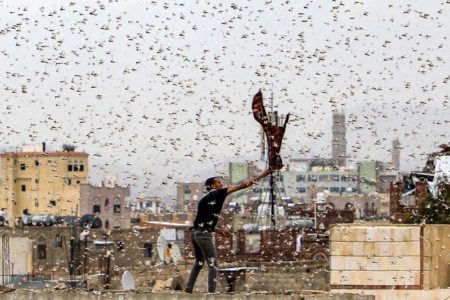
February 24, 2020 – There is much more in the way of disease, pestilence, and plague going on in the world these days than the coronavirus, now called COVID-19, an outbreak in China that has spilled over to a number of countries. A viral disease exacerbated by China, an authoritarian state whose attempt to suppress knowledge of the outbreak did the world no favours and further fuelled by incompetent efforts in a number of locales, one a luxury liner, to quarantine those infected, has led to thousands of deaths and tens of thousands of infections across a growing swath of the globe. The medical community may yet discover this virus’ Achilles Heel and develop an inoculating vaccine. It should happen much faster than past viral outbreaks of this type because of the explosion of information and its sharing across the Internet. COVID-19 has already had its genome completely described. Drugs normally used to treat malaria are showing promise in combatting the viral outbreak. And many who have contracted the disease have survived it.
As bad as the COVID-19 outbreak has been, we may soon see a light at the end of that tunnel. That’s not the case in East Africa, where a very different type of infestation is underway from Ethiopia to Tanzania. It is an ancient and biblical curse that is underway. A plague of desert locusts has invaded East Africa and is described as the worst infestation of the last quarter-century. Desert locusts have always been a problem in this part of the world. They breed in the Arabian peninsula and arrive by the thousands almost every year. But this year because of unusual rains in the Arabian Desert, the locusts have procreated on a massive scale turning the usual thousands into tens of billions in a very short period of time.
The locusts have easily made their annual jump across the Red and Arabian Seas to the shores of East Africa traveling at a rate of 150 kilometers (93 miles) per day. Each of these billion-plus swarms is as large as a city, hundreds of square kilometers in size. And within the area they fly through, they consume every stick of vegetation as they move across the landscape. Nothing is left for humans or livestock. The current swarms have put 25 million people at risk of starvation according to Oxfam.
What is there to fight desert locust swarms? Swinging a coat or towel at the locusts like the man in the above picture isn’t nearly as effective as spraying pesticides. But African countries that trade with the European Union (EU) have to meet the latter’s standards and that largely prohibits the use of effective pesticides. Not only that, the anti-genetically-modified (GMO) lobby in the EU has been pushing to ban pesticide use in Africa putting East Africans between a rock and a hard place. The EU has to bud out of the locust problem and should waive its restrictions on the use of pesticides for African food-producing-for-export countries. That way they can still try to save enough of what the locusts leave behind to feed themselves. After the locust infestation has passed, the EU guidance can be reassessed.
As for the locust swarms, climatologists believe that what we are witnessing in the Arabian Peninsula may soon become the norm as the Indian Ocean continues to warm altering cyclonic wind patterns in the region. If so, that means East Africa could begin to experience repetitions of this year’s calamitous event in increasing frequency.








